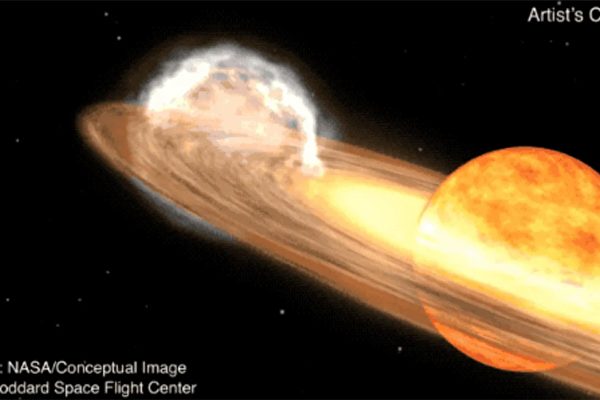A predicted celestial event is set to unfold soon within a star system located 3,000 light-years away from Earth, becoming visible to the naked eye. According to the National Aeronautics and Space Administration (NASA), this could be a rare viewing opportunity, as a new star explosion occurs approximately once every 80 years.
Known as T Coronae Borealis or T CrB, the star last erupted in 1946, and astronomers believe it will undergo another eruption between February and September of 2024.
Normally with a brightness of magnitude +10, the star system is typically invisible to the naked eye. However, during its active phase, its brightness will surge to around +2, similar to the brightness of the North Star.
Magnitude is a measure of the luminosity of celestial bodies. The smaller the magnitude value, the brighter the star; the larger the magnitude value, the dimmer its light.
As we anticipate the appearance of the new star, NASA suggests familiarizing oneself with a small semicircle near the constellations Corona Borealis, Bootes, and Hercules. This is where the eruption of the new star will occur.
Bill Cooke, head of the Meteoroid Environment Office (MEO) at NASA’s Marshall Space Flight Center in Huntsville, Alabama, informed Fox News Digital, saying, “Unfortunately, we do not know when the eclipse will occur.”
“But when it does, you will remember it.”
Dubbed the “Blaze Star,” T Coronae Borealis is one of only five recurrent novae in the Milky Way galaxy, where such events are rare due to T CrB being a binary star system composed of a white dwarf and a red giant star.
Cooke explains, “A typical nova consists of a star and a white dwarf. The former is like a red giant, larger than the Sun, while the latter is about the size of Earth.”
“The red giant is pouring material onto the surface of the white dwarf. They orbit each other closely.” Cooke further elaborates that when enough material accumulates on the surface of the white dwarf, the temperature rises significantly, triggering a thermonuclear fusion reaction on its surface.
Previously, this star might have required a telescope to observe, but suddenly, it will erupt in a visible brightness to the naked eye on Earth. This is what we see as a nova.
“The uniqueness of T Coronae Borealis lies in the fact that it does not explode just once,” Cooke points out. “It erupts approximately every 9 years.”
Currently, T Coronae Borealis has a magnitude of +10, requiring a small telescope to observe.
“But when it erupts, its magnitude will reach +2,” Cooke states. “About as bright as the North Star.”
“You will see a new star suddenly appearing there,” Cooke adds, “It will seem to come out of nowhere and remain visible for about a week before dimming.”
“It’s a bit like Halley’s Comet, but most people don’t know much about it,” Cooke remarks, stating, “Halley’s Comet receives attention from all media outlets.”
Cooke advises that once news of the eruption is heard, one should go out to observe it as soon as possible.
“Remember, you only have a few days to see it,” he emphasizes, noting that the explosion will eventually “fade away.”
Observing T Coronae Borealis is said to rival the total solar eclipse that occurred on April 8th in the United States.
“I’ve seen several solar eclipses, and it’s one of nature’s most spectacular wonders,” Cooke expresses, “But we don’t often witness star explosions. That’s what makes it unique.”
责任编辑: 葉紫微#

